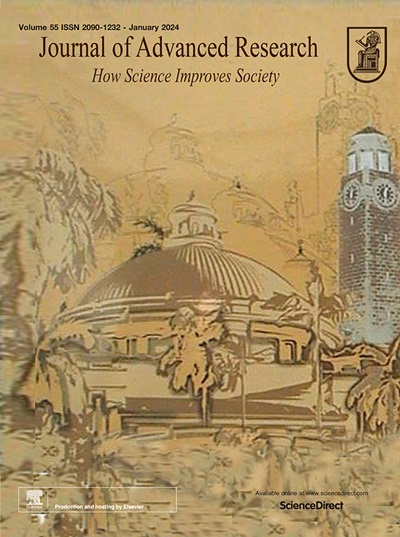在去势抵抗性前列腺癌中,雄激素受体激动剂或拮抗剂通过两种新的常见DYRK1A-DREAM和cyclin G2信号通路介导细胞衰老
IF 11.4
1区 综合性期刊
Q1 MULTIDISCIPLINARY SCIENCES
引用次数: 0
摘要
去势抵抗性前列腺癌(CRPC)是一种致命的疾病,除了对雄激素剥夺具有抗性外,通常还表现出对雄激素受体(AR)拮抗剂的抗性。生理上雄激素水平(SAL)被用于双相雄激素治疗的临床阶段试验,以抑制CRPC。方法采用免疫沉淀法、免疫荧光法、生长和细胞衰老法、小鼠异种移植CRPC法、器官AR靶基因分析、RNA-seq、ChIP-seq和患者来源异种移植物分析、qRT-PCR、3D肿瘤球、敲低实验。结果AR拮抗剂和AR激动剂均可诱导细胞衰老,尽管它们对AR转录活性的作用相反。在这里,我们确定了SAL和ar拮抗剂诱导的两种常见的生长抑制途径。使用新型AR拮抗剂化合物28 (C28),也抑制那些介导治疗耐药性的AR突变体,抑制包括CRPC肿瘤球体和小鼠异种移植肿瘤的生长。在机制上,C28降低AR转录活性所需的AR丝氨酸81和HSP27的磷酸化,并增强AR-p130的相互作用。值得注意的是,SAL处理也检测到p130水平升高,导致DREAM复合体信号的激活和细胞衰老的诱导,这表明ar激动剂和-拮抗剂使用相同的途径来抑制生长。DYRK1A是激活DREAM复合体的关键激酶,其抑制作用可阻断C28-和sal诱导的细胞衰老。C28和SAL还诱导非典型细胞周期蛋白G2 (CCNG2),也介导细胞衰老。CCNG2在治疗小鼠的CRPC肿瘤球体和异种移植物肿瘤中被证实有诱导作用。第二代ar拮抗剂Darolutamide (Dar)也能激活DREAM复合物和CCNG2。综上所述,这些发现表明,在双极雄激素治疗中,ar拮抗剂和SAL诱导的两种常见途径介导了CRPC的生长抑制和细胞衰老。本文章由计算机程序翻译,如有差异,请以英文原文为准。

Induction of cellular senescence by androgen receptor agonist or antagonist is mediated via two novel common DYRK1A-DREAM and cyclin G2 signaling pathways in castration-resistant prostate cancer
Background
Castration-resistant prostate cancer (CRPC) is a deadly disease that in addition to being resistant to androgen deprivation often exhibits also resistant to androgen receptor (AR)-antagonists. Supraphysiological androgen levels (SAL) are used in the bipolar androgen therapy in clinical phase trials to inhibit CRPC.Methods
Co-immunoprecipitation, immunofluorescence, growth and cell senescence assays, mouse xenografted CRPC, AR target gene analyses of organs, analyses of RNA-seq, ChIP-seq and patient-derived xenografts, qRT-PCR, 3D tumor spheroids, knockdown experiments.Results
Both AR-antagonists and –agonist at SAL induce cellular senescence despite acting oppositely on AR transcriptional activity. Here, we identified two common growth inhibitory pathways induced by SAL and AR-antagonists. Using the novel AR-antagonist compound 28 (C28), that inhibits also those AR mutants mediating therapy resistance, represses growth including CRPC tumor spheroids and mouse xenografted tumors. Mechanistically, C28 reduces phosphorylation of AR at serine 81 and HSP27 required for AR transcriptional activity and enhances AR-p130 interaction. Notably, increased p130 levels were also detected by SAL treatment leading to activation of DREAM complex signaling and induction of cellular senescence indicating that both AR-agonist and –antagonist use the same pathway for growth repression. Inhibition of DYRK1A, a key kinase to activate DREAM complex, blocks C28- and SAL-induced cellular senescence. Both C28 and SAL also induces the atypical cyclin G2 (CCNG2), which also mediates cellular senescence. Induction of CCNG2 is confirmed in CRPC tumor spheroids and xenograft tumors of treated mice. The second-generation AR-antagonist Darolutamide (Dar) also activates DREAM complex and CCNG2.Conclusion
Taken together, these findings suggests the identification of two common pathways induced by AR-antagonists and SAL, used in bipolar androgen therapy, to mediate growth inhibition and induction of cellular senescence in CRPC.求助全文
通过发布文献求助,成功后即可免费获取论文全文。
去求助
来源期刊

Journal of Advanced Research
Multidisciplinary-Multidisciplinary
CiteScore
21.60
自引率
0.90%
发文量
280
审稿时长
12 weeks
期刊介绍:
Journal of Advanced Research (J. Adv. Res.) is an applied/natural sciences, peer-reviewed journal that focuses on interdisciplinary research. The journal aims to contribute to applied research and knowledge worldwide through the publication of original and high-quality research articles in the fields of Medicine, Pharmaceutical Sciences, Dentistry, Physical Therapy, Veterinary Medicine, and Basic and Biological Sciences.
The following abstracting and indexing services cover the Journal of Advanced Research: PubMed/Medline, Essential Science Indicators, Web of Science, Scopus, PubMed Central, PubMed, Science Citation Index Expanded, Directory of Open Access Journals (DOAJ), and INSPEC.
 求助内容:
求助内容: 应助结果提醒方式:
应助结果提醒方式:


